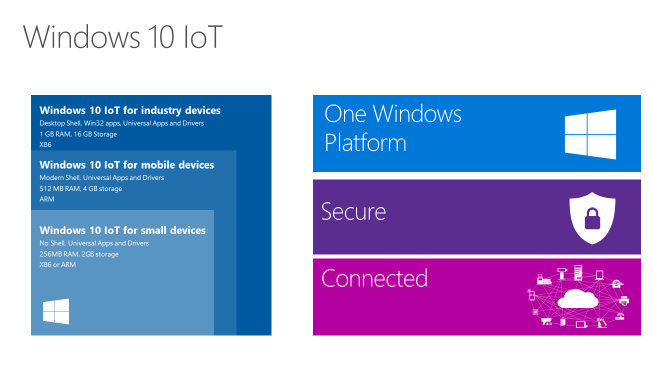Windows 10 IoT: How Microsoft plans to get it right for Internet of Things devices

Microsoft’s forthcoming Windows 10 operating system will, in addition to powering desktop computers and mobile devices, also provide a platform for Internet of Things (IoT) gadgets. The Redmond-based company -- which earlier this year announced that it will be providing its operating system for free for such devices -- is shedding more light on its plan.
Microsoft notes that Windows 10 IoT will power a range of IoT devices including small products like gateways, mobile point-of-sale, ATMs, powerful industry devices like robotics, and specialty medical devices such as ultrasound machines. Despite their miniature form factor, the company assures enterprise-grade security from the devices to cloud, while also providing them with native connectivity for machine-to-machine and machine-to-cloud with Azure services.
The company also reiterates its commitment to providing the software for free to these devices to unlock new possibilities for them. "To address emerging IoT device categories, we are delivering a new version of Windows 10 for small devices that will be free for Makers and commercial device builders and device services to unlock new scenarios", the company notes on a blog post.
To start on the right foot, Microsoft has partnered with the Raspberry Pi Foundation, Intel, and Qualcomm to provide a range of developer boards "to bring Windows 10 devices to life." On a side note, this is a great opportunity for chipmaker Intel to battle for the pole position in the emerging IoT category. Intel single-handedly dominates the desktop processor market, but the Santa Clara, California-based chipmaker was pretty late to join the mobile processor bandwagon, and it would definitely not want to make the same mistake again.
Microsoft recently introduced Qualcomm’s DragonBoard 410C development board to the Windows 10 device family. The Raspberry Pi-sized board comes integrated with Wi-Fi 802.11 b/g/n, Bluetooth, GPS, LPDDR2/3 533MHz single-channel memory and a full-fledged Snapdragon 410 chipset.
The company predicts that Windows will be powering over 25 billion devices by 2020.
